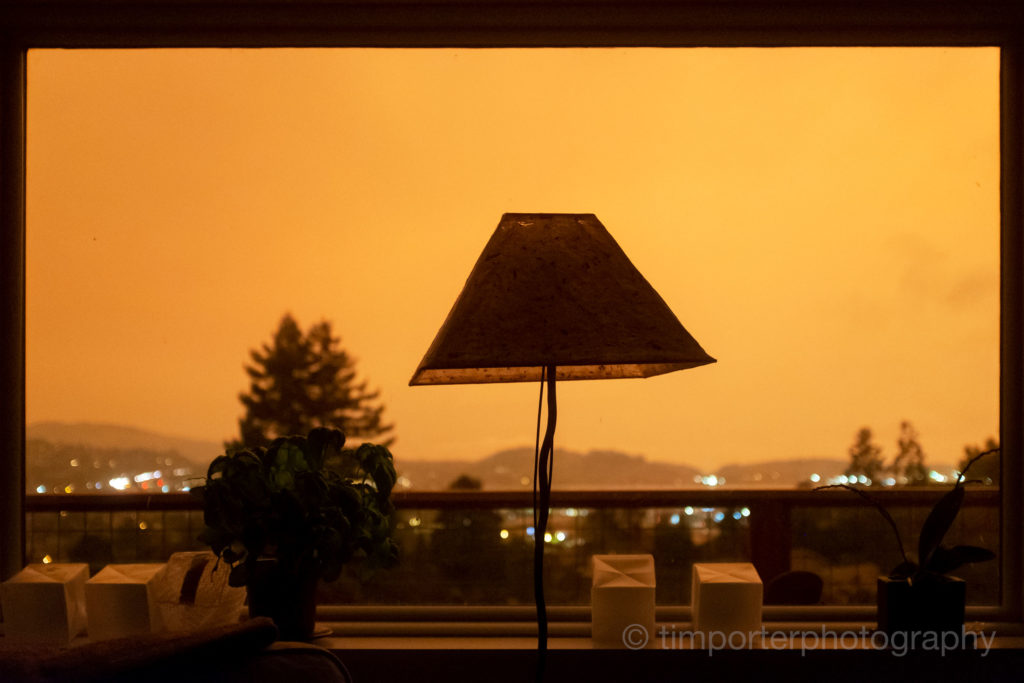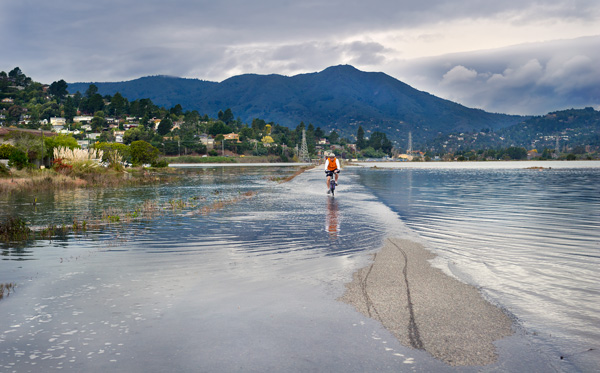
The party’s done. The bacchanalia that was California, the orgy of consumption, the decades-long bender of natural exploitation and the wanton disregard for the consequence of our excesses is over. Don’t point your fingers at us, because what happens in California never stays here. We export our culture, our technology and our food. Coming soon to you will be our apocalypse.
The hangover is painful.
The day dawned red today. Where there was supposed to be the waning blacks of the night, there was red. Where there was supposed to be the wash of the morning grays, there was red. Where tones of blue and gold once tinted the sky, there were shades of red. A red dawn so dense, so foreboding that even now, an hour past sunrise, the streetlights remain lit, reminders of the darkness we have brought to our land.
We partied like there was no tomorrow. There was, though, and it is today. The fires to the north, the east, the south and, even, as improbable as it sounds because I live twenty minutes from the beach, to the west; the post-A-Bomb-ish pryocumulus towers rising six miles in the sky; the homes turned to charcoal; the animals, wild and domestic, murdered by our greed; the dystopic scenes of backpackers, jet skiers and campers airlifted by twin-rotored Chinooks. This is the tomorrow we thought would never come.
Red in the morning, sailor’s warning. So goes the mariner’s adage, an alert of rough seas to come. The addition of a vowel changes the admonition: Red is the mourning.
Human beings, by nature, are deniers of the negative (as are all creatures). This is how we get through the day. Most of us don’t greet the morning worrying about eventual illness or certain death or improbable tragedies.. We plan to finish our days as we start them – at home, amid our comforts and our companions. As such, we have denied, either from convenience, neglect or simple stubborn adherence to a belief that tomorrow is somebody else’s problem, that we have damaged the planet to the point where its instinctive revenge is to kill us and drive us from its terrains. Fires, drought, storms from the sea, rising waters. This is the tomorrow we created. This is nature’s planetary payback.
I am as guilty as anyone. My car, my home, my travels consume fossil fuels. I assuage my concerns by recycling milk cartons, buying kale from local farmers and not turning on the heat so early in the winter. If I am not Nero fiddling amid the embers of Rome, then I am the man who tuned his violin. Together, we are an orchestra of shame. I don’t know how we stop. I don’t know if we can.


